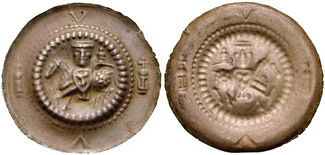|
Friedrich Gabriel Sulzer
Friedrich Gabriel Sulzer (10 October 1749 – 14 December 1830) was a German physician from Gotha, Thuringia. Sulzer had a large collection of minerals and published also new results from new species. In 1791, Sulzer published together with Johann Friedrich Blumenbach their results on a new mineral he had acquired. He named the mineral strontianite (strontium carbonate) and made clear that it was distinct from the witherite (barium carbonate) and stated that it contained a new element. He was head of a veterinary school and a midwifery school and chief physician for the local spa in Ronneburg, Thuringia. Additionally, he was the physician for Dorothea von Medem and her sister Elisa von der Recke. He was part of the ''Musenhof der Herzogin von Kurland''. In 1774, Sulzer, a companion of Johann Wolfgang von Goethe, devoted a whole academic monography in the domain of social sciences and natural history to hamsters, entitled "An approach to a natural history of the hamster" ("''V ... [...More Info...] [...Related Items...] OR: [Wikipedia] [Google] [Baidu] |
Gotha
Gotha () is the fifth-largest city in Thuringia, Germany, west of Erfurt and east of Eisenach with a population of 44,000. The city is the capital of the district of Gotha and was also a residence of the Ernestine Wettins from 1640 until the end of monarchy in Germany in 1918. The House of Saxe-Coburg and Gotha originating here spawned many European rulers, including the royal houses of the United Kingdom, Belgium, Portugal (until 1910) and Bulgaria (until 1946). In the Middle Ages, Gotha was a rich trading town on the trade route ''Via Regia'' and between 1650 and 1850, Gotha saw a cultural heyday as a centre of sciences and arts, fostered by the dukes of Saxe-Gotha. The first duke, Ernest the Pious, was famous for his wise rule. In the 18th century, the ''Almanach de Gotha'' was first published in the city. The publisher Justus Perthes and the encyclopedist Joseph Meyer made Gotha a leading centre of German publishing around 1800. In the early 19th century, Gotha was a bi ... [...More Info...] [...Related Items...] OR: [Wikipedia] [Google] [Baidu] |
Elisa Von Der Recke
Elisabeth "Elisa" Charlotte Constanzia von der Recke (née von Medem; 20 May 1754 – 13 April 1833) was a Baltic German writer and poet. Family Elisa von der Recke was born in Schönberg, Skaistkalne parish, Courland (present-day Skaistkalne, Vecumnieki Municipality, Latvia), the daughter of Graf (later Reichsgraf) Johann Friedrich von Medem (1722-1785) and his wife, Luise Dorothea von Korff (1736-1757). Her younger half-sister was Dorothea von Medem, for whom she carried out diplomatic work. In 1771 she married Kammerherr Georg Peter Magnus von der Recke (1739-1795), living with him at Neuenburg Castle (now Jaunpils Castle). She separated from him in 1776 and divorced in 1781. Their daughter, Frederika von der Recke, died in 1777. Life In 1787 her first book, ''Nachricht von des berüchtigten Cagliostro Aufenthalt in Mitau im Jahre 1779 und dessen magischen Operationen'', a memoir-exposé of the months when she studied magic with "Count" Alessandro di Cagliostro ... [...More Info...] [...Related Items...] OR: [Wikipedia] [Google] [Baidu] |
18th-century German Physicians
The 18th century lasted from January 1, 1701 ( MDCCI) to December 31, 1800 ( MDCCC). During the 18th century, elements of Enlightenment thinking culminated in the American, French, and Haitian Revolutions. During the century, slave trading and human trafficking expanded across the shores of the Atlantic, while declining in Russia, China, and Korea. Revolutions began to challenge the legitimacy of monarchical and aristocratic power structures, including the structures and beliefs that supported slavery. The Industrial Revolution began during mid-century, leading to radical changes in human society and the environment. Western historians have occasionally defined the 18th century otherwise for the purposes of their work. For example, the "short" 18th century may be defined as 1715–1789, denoting the period of time between the death of Louis XIV of France and the start of the French Revolution, with an emphasis on directly interconnected events. To historians who expand ... [...More Info...] [...Related Items...] OR: [Wikipedia] [Google] [Baidu] |
18th-century German Educators
The 18th century lasted from January 1, 1701 ( MDCCI) to December 31, 1800 ( MDCCC). During the 18th century, elements of Enlightenment thinking culminated in the American, French, and Haitian Revolutions. During the century, slave trading and human trafficking expanded across the shores of the Atlantic, while declining in Russia, China, and Korea. Revolutions began to challenge the legitimacy of monarchical and aristocratic power structures, including the structures and beliefs that supported slavery. The Industrial Revolution began during mid-century, leading to radical changes in human society and the environment. Western historians have occasionally defined the 18th century otherwise for the purposes of their work. For example, the "short" 18th century may be defined as 1715–1789, denoting the period of time between the death of Louis XIV of France and the start of the French Revolution, with an emphasis on directly interconnected events. To historians who expand the ... [...More Info...] [...Related Items...] OR: [Wikipedia] [Google] [Baidu] |
1830 Deaths
Year 183 ( CLXXXIII) was a common year starting on Tuesday (link will display the full calendar) of the Julian calendar. At the time, it was known as the Year of the Consulship of Aurelius and Victorinus (or, less frequently, year 936 ''Ab urbe condita''). The denomination 183 for this year has been used since the early medieval period, when the Anno Domini calendar era became the prevalent method in Europe for naming years. Events By place Roman Empire * An assassination attempt on Emperor Commodus by members of the Senate fails. Births * January 26 – Lady Zhen, wife of the Cao Wei state Emperor Cao Pi (d. 221) * Hu Zong, Chinese general, official and poet of the Eastern Wu state (d. 242) * Liu Zan (Zhengming), Chinese general of the Eastern Wu state (d. 255) * Lu Xun Zhou Shuren (25 September 1881 – 19 October 1936), better known by his pen name Lu Xun (or Lu Sun; ; Wade–Giles: Lu Hsün), was a Chinese writer, essayist, poet, and literary critic. He ... [...More Info...] [...Related Items...] OR: [Wikipedia] [Google] [Baidu] |
1749 Births
Events January–March * January 3 ** Benning Wentworth issues the first of the New Hampshire Grants, leading to the establishment of Vermont. ** The first issue of ''Berlingske'', Denmark's oldest continually operating newspaper, is published. * January 21 – The Teatro Filarmonico, the main opera theater in Verona, Italy, is destroyed by fire. It is rebuilt in 1754. * February – The second part of John Cleland's erotic novel ''Fanny Hill'' (''Memoirs of a Woman of Pleasure'') is published in London. The author is released from debtors' prison in March. * February 28 – Henry Fielding's comic novel ''The History of Tom Jones, a Foundling'' is published in London. Also this year, Fielding becomes magistrate at Bow Street, and first enlists the help of the Bow Street Runners, an early police force (eight men at first). * March 6 – A "corpse riot" breaks out in Glasgow after a body disappears from a churchyard in the Gorbals district. Suspicion fa ... [...More Info...] [...Related Items...] OR: [Wikipedia] [Google] [Baidu] |
List Of Physicians
This is a list of famous physicians in history. Chronological lists Ancient physicians 30th century BCE to 4th century CE * List of ancient physicians Post-classical physicians 5th century CE to 15th century CE * List of post-classical physicians Early modern physicians 16th century CE to the mid-18th century CE * List of early modern physicians Late modern physicians mid-18th century CE to the mid-20th century CE * List of late modern physicians Physicians famous for their role in advancement of medicine * William Osler Abbott (1902–1943) — co-developed the Miller-Abbott tube * William Stewart Agras (born 1929) — feeding behavior * Virginia Apgar (1909–1974) — anesthesiologist who devised the Apgar score used after childbirth * Jean Astruc (1684–1766) — wrote one of the first treatises on syphilis * Averroes (1126–1198) — Andalusian polymath * Avicenna (980–1037) — Persian physician * Gerbrand Bakker (1771–1828) — Dutch physician, ... [...More Info...] [...Related Items...] OR: [Wikipedia] [Google] [Baidu] |
List Of Germans
This is a list of notable Germans. Persons of mixed heritage have their respective ancestries credited. Architects * Walter Gropius (1883–1969), architect * Carl Ludvig Engel (1778–1840), architect * Leo von Klenze (1784–1864), architect * Balthasar Neumann (1687–1753), architect and engineer * Matthäus Daniel Pöppelmann (1662–1736), architect * Ludwig Mies van der Rohe (1886–1969), architect * Karl Friedrich Schinkel (1781–1841), architect and painter * Johann Conrad Schlaun (1695–1773), architect * Gottfried Semper (1803–1879), architect * Albert Speer (1905–1981), architect * Wilhelm Kreis (1873–1955), architect Artists A–M * Hans von Aachen (1552–1615), mannerist painter * Albrecht Altdorfer (1480–1538), painter * Gertrud Arndt (1903–2000), photographer; pioneering self-portraiture * Ernst Barlach (1870–1938), sculptor and writer * Günther Behnisch (1922–2010), architect * Peter Behrens (1868–1940), architect * Sibylle B ... [...More Info...] [...Related Items...] OR: [Wikipedia] [Google] [Baidu] |
Johann Christian Dieterich
Johann Christian Dieterich (1722The '' Allgemeinen Deutschen Biographie'' gives 1712, but this contradicts church records.–1800) was the founder of the Dieterich'schen Verlagsbuchhandlung publishing house and a close friend of Georg Christoph Lichtenberg. He published the first ''Musen-Almanach''. Early years Dieterich was born in Stendal. He began his career as proprietor of a silk shop in Berlin, which he moved to Gotha. In 1749 he married the daughter of the bookseller Mevius and began running his shop for him. Career In 1760 he started a new bookshop in Göttingen, printed a few books, and in 1770 established a publishing house. Among the most famous authors whose works he published are Gottfried August Bürger and Georg Christoph Lichtenberg. He was a close friend of the latter, and between 1776 and his death in 1799, Lichtenberg lived in the Dieterich family's house. On his travels he wrote many long letters to the Dieterichs. Death Dieterich died in Göttingen. ... [...More Info...] [...Related Items...] OR: [Wikipedia] [Google] [Baidu] |
Homo Sapiens
Humans (''Homo sapiens'') are the most abundant and widespread species of primate, characterized by bipedalism and exceptional cognitive skills due to a large and complex brain. This has enabled the development of advanced tools, culture, and language. Humans are highly social and tend to live in complex social structures composed of many cooperating and competing groups, from families and kinship networks to political states. Social interactions between humans have established a wide variety of values, social norms, and rituals, which bolster human society. Its intelligence and its desire to understand and influence the environment and to explain and manipulate phenomena have motivated humanity's development of science, philosophy, mythology, religion, and other fields of study. Although some scientists equate the term ''humans'' with all members of the genus ''Homo'', in common usage, it generally refers to ''Homo sapiens'', the only extant member. Anatomically mod ... [...More Info...] [...Related Items...] OR: [Wikipedia] [Google] [Baidu] |
Hamster
Hamsters are rodents (order Rodentia) belonging to the subfamily Cricetinae, which contains 19 species classified in seven genera.Fox, Sue. 2006. ''Hamsters''. T.F.H. Publications Inc. They have become established as popular small pets. The best-known species of hamster is the golden or Syrian hamster (''Mesocricetus auratus''), which is the type most commonly kept as pets. Other hamster species commonly kept as pets are the three species of dwarf hamster, Campbell's dwarf hamster (''Phodopus campbelli''), the winter white dwarf hamster (''Phodopus sungorus'') and the Roborovski hamster (''Phodopus roborovskii''). Hamsters are more crepuscular than nocturnal and, in the wild, remain underground during the day to avoid being caught by predators. They feed primarily on seeds, fruits, and vegetation, and will occasionally eat burrowing insects. Physically, they are stout-bodied with distinguishing features that include elongated cheek pouches extending to their shoulders, which ... [...More Info...] [...Related Items...] OR: [Wikipedia] [Google] [Baidu] |





